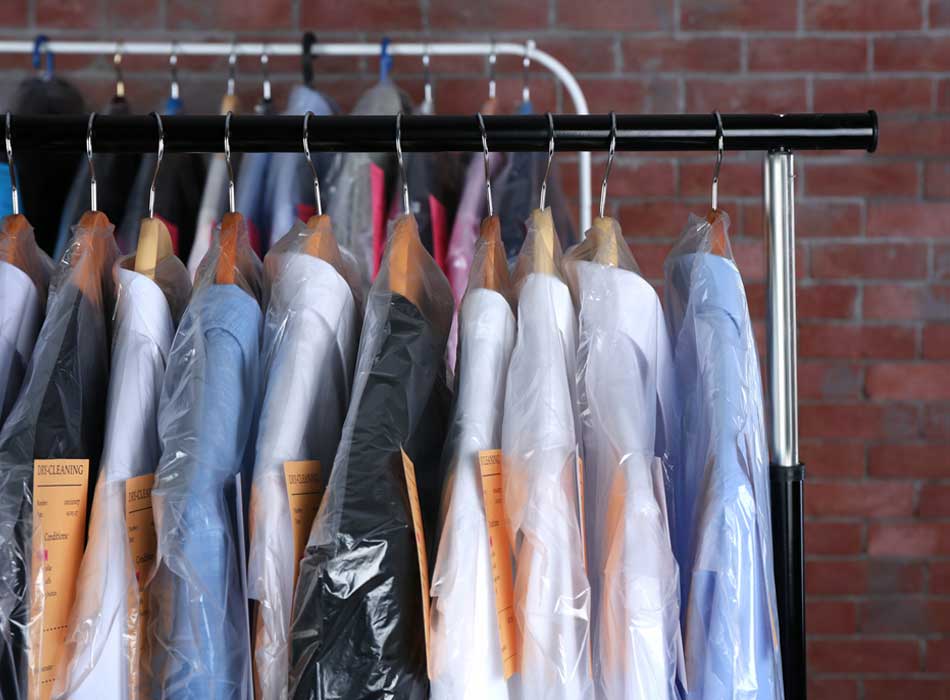Blog details
Dry Clean or Wash? The Ultimate Guide to Fabric-Specific Care
Learn when to dry clean or wash at home. Wonder Wash explains fabric-specific care, stain treatment, and pickup & delivery for hassle-free laundry.

Choosing between dry cleaning and washing can feel confusing, but the right decision keeps your clothes in good condition for longer. Different fabrics respond differently to water, heat, and cleaning agents, so knowing which method to use can save you money and prevent damage. Here’s a clear guide, built on practical advice from Wonder Wash, to help you care for clothes.
1. Start With the Care Label
Your garment’s care label is the simplest, most reliable place to start.
• If it says “Dry Clean Only”, the fabric, structure, or dyes likely can’t handle water. Ignoring this could cause shrinking, colour bleeding, or warping.
• If it says “Dry Clean”, that’s a preference, not an absolute rule—you may hand wash gently, but results can vary.
• If it has standard wash symbols without mention of dry cleaning, it’s generally safe to wash at home.
Checking labels avoids costly mistakes and ensures your clothes last longer.
2. When Dry Cleaning Is the Better Option
Dry cleaning uses solvents instead of water, making it ideal for:
• Structured garments like suits, jackets, and coats. Water can shrink linings or distort shapes.
• Delicate fabrics such as silk, wool, velvet, rayon, and acetate. These can lose texture, shrink, or stain in water.
• Heavily embellished or formal outfits—think sarees, gowns, or anything with sequins, lace, or beads.
• Oil-based stains like grease, ink, or cosmetics. Solvents break these down more effectively than water.
• High-value and designer wear that you want handled with maximum care.
3. When Washing at Home Works Best
Not all garments need professional cleaning. Washing at home can work well for:
• Cotton and polyester everyday wear—T-shirts, casual shirts, gym gear, and bedsheets.
• Denim, which prefers cold-water washing and air-drying. Too much dry cleaning can affect its colour and finish.
• Fabrics with glued trims or plastic components, which may react badly to solvents.
When in doubt, use gentle cycles, mild detergents, and avoid overloading your machine.
4. How Wonder Wash Handles Garments
Wonder Wash’s process is designed to match cleaning methods to each fabric’s needs:
1. Inspection and Sorting – Clothes are checked for stains, sorted by colour, fabric type, and care label instructions.
2. Gentle Cleaning Cycles – Delicate fabrics get special cycles with reduced motion, lower temperatures, and fabric-safe detergents.
3. Expert Dry Cleaning – For items requiring solvent care, stains are pre-treated before cleaning and finishing.
4. Careful Ironing – Heat levels are set according to fabric type, avoiding burns or shine marks.
5. Final Quality Check – Every garment is re-inspected before being packed for return.
This approach protects both fabric integrity and appearance.
5. Convenience Through Pickup and Delivery
Wonder Wash removes the hassle from fabric care:
• Free pickup and delivery make it easy to keep up with laundry, even for large or bulky loads.
• Flexible scheduling means you can choose collection and drop-off times that fit your routine.
• Special bundles like wash-and-iron packages save time for busy households and professionals.
6. At-Home Fabric Care Tips
Whether you wash at home or choose dry cleaning, these habits help clothes last:
• Turn garments inside-out to reduce fading.
• Avoid over-drying in machines—air drying is gentler.
• Store clothes in a cool, dry space; avoid cramming wardrobes.
• Treat stains promptly—dab gently instead of rubbing.
• For wool and cashmere, fold instead of hanging to prevent stretching.
7. Why the Right Method Matters
Picking the wrong cleaning method can shorten a garment’s life:
• Water damage – Shrinking, fading, or fabric distortion, especially with delicate materials.
• Solvent damage – If not meant for dry cleaning, glued trims and faux materials can loosen or discolour.
• Loss of shape – Structured clothing like blazers or pleated skirts can lose their crisp look with improper washing.
Professional services help avoid these issues, especially for items with sentimental or financial value.
Conclusion
Caring for clothes is about respecting the fabric’s limits. Dry cleaning is essential for structured, delicate, and high-value garments, whereas washing works well for everyday cotton, polyester, and denim. The key is to read the label, know the fabric, and treat each piece according to its needs.
With services like Wonder Wash, you get the benefit of professional inspection, fabric-matched cleaning, careful ironing, and convenient pickup and delivery. The right care keeps your wardrobe in top condition—ready for whenever you need it.

Choosing between dry cleaning and washing can feel confusing, but the right decision keeps your clothes in good condition for longer. Different fabrics respond differently to water, heat, and cleaning agents, so knowing which method to use can save you money and prevent damage. Here’s a clear guide, built on practical advice from Wonder Wash, to help you care for clothes.
1. Start With the Care Label
Your garment’s care label is the simplest, most reliable place to start.
• If it says “Dry Clean Only”, the fabric, structure, or dyes likely can’t handle water. Ignoring this could cause shrinking, colour bleeding, or warping.
• If it says “Dry Clean”, that’s a preference, not an absolute rule—you may hand wash gently, but results can vary.
• If it has standard wash symbols without mention of dry cleaning, it’s generally safe to wash at home.
Checking labels avoids costly mistakes and ensures your clothes last longer.
2. When Dry Cleaning Is the Better Option
Dry cleaning uses solvents instead of water, making it ideal for:
• Structured garments like suits, jackets, and coats. Water can shrink linings or distort shapes.
• Delicate fabrics such as silk, wool, velvet, rayon, and acetate. These can lose texture, shrink, or stain in water.
• Heavily embellished or formal outfits—think sarees, gowns, or anything with sequins, lace, or beads.
• Oil-based stains like grease, ink, or cosmetics. Solvents break these down more effectively than water.
• High-value and designer wear that you want handled with maximum care.
3. When Washing at Home Works Best
Not all garments need professional cleaning. Washing at home can work well for:
• Cotton and polyester everyday wear—T-shirts, casual shirts, gym gear, and bedsheets.
• Denim, which prefers cold-water washing and air-drying. Too much dry cleaning can affect its colour and finish.
• Fabrics with glued trims or plastic components, which may react badly to solvents.
When in doubt, use gentle cycles, mild detergents, and avoid overloading your machine.
4. How Wonder Wash Handles Garments
Wonder Wash’s process is designed to match cleaning methods to each fabric’s needs:
1. Inspection and Sorting – Clothes are checked for stains, sorted by colour, fabric type, and care label instructions.
2. Gentle Cleaning Cycles – Delicate fabrics get special cycles with reduced motion, lower temperatures, and fabric-safe detergents.
3. Expert Dry Cleaning – For items requiring solvent care, stains are pre-treated before cleaning and finishing.
4. Careful Ironing – Heat levels are set according to fabric type, avoiding burns or shine marks.
5. Final Quality Check – Every garment is re-inspected before being packed for return.
This approach protects both fabric integrity and appearance.
5. Convenience Through Pickup and Delivery
Wonder Wash removes the hassle from fabric care:
• Free pickup and delivery make it easy to keep up with laundry, even for large or bulky loads.
• Flexible scheduling means you can choose collection and drop-off times that fit your routine.
• Special bundles like wash-and-iron packages save time for busy households and professionals.
6. At-Home Fabric Care Tips
Whether you wash at home or choose dry cleaning, these habits help clothes last:
• Turn garments inside-out to reduce fading.
• Avoid over-drying in machines—air drying is gentler.
• Store clothes in a cool, dry space; avoid cramming wardrobes.
• Treat stains promptly—dab gently instead of rubbing.
• For wool and cashmere, fold instead of hanging to prevent stretching.
7. Why the Right Method Matters
Picking the wrong cleaning method can shorten a garment’s life:
• Water damage – Shrinking, fading, or fabric distortion, especially with delicate materials.
• Solvent damage – If not meant for dry cleaning, glued trims and faux materials can loosen or discolour.
• Loss of shape – Structured clothing like blazers or pleated skirts can lose their crisp look with improper washing.
Professional services help avoid these issues, especially for items with sentimental or financial value.
Conclusion
Caring for clothes is about respecting the fabric’s limits. Dry cleaning is essential for structured, delicate, and high-value garments, whereas washing works well for everyday cotton, polyester, and denim. The key is to read the label, know the fabric, and treat each piece according to its needs.
With services like Wonder Wash, you get the benefit of professional inspection, fabric-matched cleaning, careful ironing, and convenient pickup and delivery. The right care keeps your wardrobe in top condition—ready for whenever you need it.



The Benefits of Dry Cleaning: When to Us...
Discover when dry cleaning is the smarter choice for your clothes. Learn...

Dry Cleaning Demystified
Dry Cleaning Demystified: What Can & Can't Be Dry Cleaned (And Why...
This website uses cookies
Kindly accept cookies and continue using our website for a smoother experience. Our Cookie Policy
